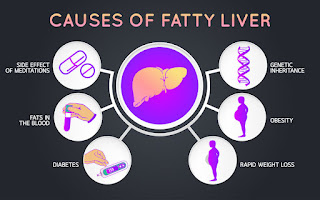Eating a ketogenic diet can be a powerful way to achieve weight loss, improved mental clarity, and increased energy levels. However, staying on track with your keto diet can be challenging without proper planning. That's where keto meal planning comes to the rescue. In this guide, we'll explore what keto meal planning is, how to do it effectively, and why it's crucial for your keto journey.
What is Keto Meal Planning?
Keto meal planning involves strategically designing your meals and snacks to align with the principles of the ketogenic diet. It helps you stay within your desired macronutrient ratios, typically high in healthy fats, moderate in protein, and low in carbohydrates. By pre-determining your meals, you can ensure you have the right ingredients on hand and avoid impulsive decisions that may sabotage your progress.
Why is Keto Meal Planning Important?
Keto meal planning offers several benefits that can significantly enhance your adherence to the ketogenic diet:
Promotes Consistency:
Planning ahead ensures you consistently follow your keto diet, minimizing the risk of accidental carb intake and maintaining a state of ketosis.
Saves Time and Energy:
With a well-thought-out plan, you can streamline your grocery shopping, cooking, and meal prep, saving valuable time and reducing decision fatigue.
Reduces Stress:
Knowing what you'll eat in advance eliminates the stress of figuring out keto-friendly options on the spot, especially when you're busy or faced with limited choices.
By planning your meals, you can manage portion sizes, avoid overeating, and maintain the ideal caloric intake for your goals.
Helps You Discover New Recipes:
Meal planning encourages you to explore a variety of keto recipes, ensuring you don't fall into a rut and making your keto journey more enjoyable.
How to Keto Meal Plan Effectively
Now that we understand the importance of keto meal planning, let's dive into the steps for effective meal planning on a ketogenic diet:
Define Your Goals:
Clarify your goals, whether it's weight loss, improved health markers, or sustained energy throughout the day. Knowing your objectives will guide your meal planning decisions.
Calculate Your Macronutrient Needs:
Determine your daily macronutrient targets based on your goals. Typically, the ketogenic diet involves consuming 70-75% of calories from fat, 20-25% from protein, and 5-10% from carbohydrates.
Create a Meal Planning Template:
If you click the picture you can go to a post to download this meal planner template:
Design a weekly meal planning template or use pre-made ones available online. Divide it into breakfast, lunch, dinner, and snacks to ensure balanced meals throughout the day.
Explore Keto-Friendly Recipes:
Look for keto recipes that align with your tastes and dietary restrictions. Consider recipes that are easy to prepare, utilize readily available ingredients, and can be batch cooked for meal prepping.
Build Your Meal Plan:
Fill in your meal planning template with the chosen recipes, ensuring they meet your macronutrient goals. Plan for variety, including different protein sources, vegetables, and fats to keep your meals interesting.
Consider Nutrient Density:
Incorporate a wide range of nutrient-dense foods, such as leafy greens, avocados, nuts, and seeds, to ensure you're meeting your vitamin and mineral requirements.
Make a Grocery List:
Once your meal plan is complete, create a detailed grocery list based on the ingredients needed. Check your pantry and cross off any items you already have to avoid unnecessary purchases.
Prep and Batch Cook:
Set aside time for meal prepping to streamline your week. Prepare ingredients in advance, cook in bulk, and portion meals into containers for easy grab-and-go options.
Stay Flexible:
While meal planning is essential, allow for flexibility in case unexpected events or dining out situations arise. Have backup options or quick recipes on hand to ensure you can adapt your plan if needed.
Keto meal planning is a vital tool for successfully following a ketogenic diet. By strategically organizing your meals, you can stay consistent, save time, reduce stress, and control portion sizes. With careful preparation and a flexible mindset, you'll set yourself up for keto success and enjoy the numerous benefits of this low-carb, high-fat lifestyle.
We hope this post has equipped you with the knowledge and tools you need to embark on your keto meal planning journey. Remember, preparation is key, and with practice, meal planning will become second nature. Stay dedicated, experiment with new recipes, and savor the journey toward your health and wellness goals. Happy keto meal planning!
































